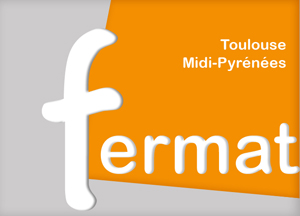Particle-Resolved Simulation of Mono- and Bi-Disperse Fluid-Solid Couette Flows
Résumé: A particle resolved numerical simulation tool, based on the tensorial viscous penalty method, that allows the resolution of the fluid-flow around the moving particles was used to investigate both mono and bi-disperse fluid-particle flow in a Couette configuration, aiming to study the flow, as well as to test, improve and develop macroscopic models, notably leveraging the level of detail contained in the resolved simulations. A hybrid Eulerian-Lagrangian statistical approach to extract the statistics of the fluid-particle flow is described. The fluid phase is taken into account by a characteristic phase operator that notably allows for the derivation fluid-particle interfacial transport terms. The particles are described by a probability density function, and via the Liouville’s formalism, continuum transport equations of the particle phase such as the particle fluctuating kinetic energy are derived. The trailblazing aspect of such methodology is that long duration contacts between particles are allowed. A methodology for the calculation of particle and fluid statistics, as well as the calculation of the coupling terms, are described. In addition, an original method for decomposing the particle-particle interaction terms into source and flux terms are presented. Mono disperse cases were studied and the effects of the inertia and particle volume fraction were investigated. Several particle and fluid statistics, such as the mean velocity and fluctuating kinetic energy are given and analyzed with respect to the flow physics. Viscous dissipation as well as its spatial and temporal scales are compared to the other relevant scales. Particle kinetic stress as well as the third and fourth order particle velocity fluctuation correlations, are analyzed and tested against available modeling. Relevant transport equations of both the particle and the fluid phase are presented in the form of budgets, highlighting local physical mechanisms, such as production, destruction, as well as fluid-particle and particle-particle interactions. Fluid force modeling both for an single and for an ensemble of particles is revisited. A correlation analysis is performed to inquiry into the mean transverse force in the particle flow. In addition, a Stochastic Langevin approach is used to model fluid force velocity fluctuation correlations, this formalism is tested against our data providing interesting modeling insights.
Bi-dispersion is achieved with lighter and heavier particles with the same diameter. An equivalent Stokes number for the bi-disperse flows are derived and analyzed in the frame of our data. Particle-particle interaction terms are separated into the global contribution of the heavier and the lighter phase, in the fluctuating kinetic energy budget, then those terms are further separated into source and flux terms. Next, an extension for the mean bi-disperse restitution coefficient is presented and then used to test against the momentum collisional flux and kinetic stress source terms, yielding interesting results.
Keywords: particle resolved simulation, fluid-particle flow, Couette, fluid- particle interaction, particle-particle interaction, particle kinetic stress, model-ing, bi-disperse, Stokes number, budget analysis, stochastic, Langevin, drag-law, fluid force velocity correlation modeling, collisional modeling, source and flux terms, kinetic theory of granular flow.
Membres du Jury : Adrien Toutant (Rapporteur), Jean-Philippe Matas (Rapporteur), Ivana Vinkovic, Micheline Abbas, Julien Chauchat, Stéphane Vincent, Olivier Simonin (Directeur de thèse) Pascal Fede (Co-Directeur de thèse)





